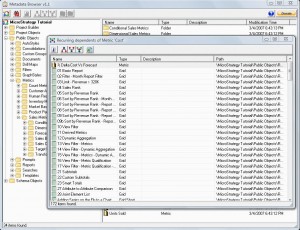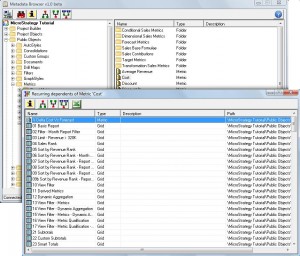I happen to know a guy or two whose curiosity for Intelligence Server SDK increased alarmingly in the last couple of months. I dedicate this article to them, and anybody who would like to get their hands dirty with some cool stuff.
But first of all, what is IS SDK? Most of the SDK guys are familiar with the Web SDK, the one which allows endless customizing to the web interface of MicroStrategy, amongst other things. Intelligence Server SDK, on the other hand, deals with reading, creating, modifying and executing objects from your Metadata. One can easily consider it to be Command Manager’s big brother who went to College. Unlike Command Manager, IS SDK is anything but user friendly. But man, it packs a serious punch if you learn how to handle it! The documentation and Tech Notes do provide all the necessary information to do just about anything, but actual examples are scarce.
IS SDK can be used via Visual Basic or C++. Since I’m by no means a pure breed programmer, I work with VBA, which is more or less like speaking English to the computer.
Enough introductions already. If you want to unleash its power, the first thing you must do is connect to a project. This apparently simple task poses enough challenges to deter many an enthusiastic programmer from going any further. I find this counterproductive and quite discomforting.
This is why I assembled a startup kit customized for VB6, which offers the code and explanations on how to connect to a project. Actually, it is the exact form that I used for Metadata Browser.
Download here:
Connection.zip
Updates and new tips may come in the future, depending on your feedback.

